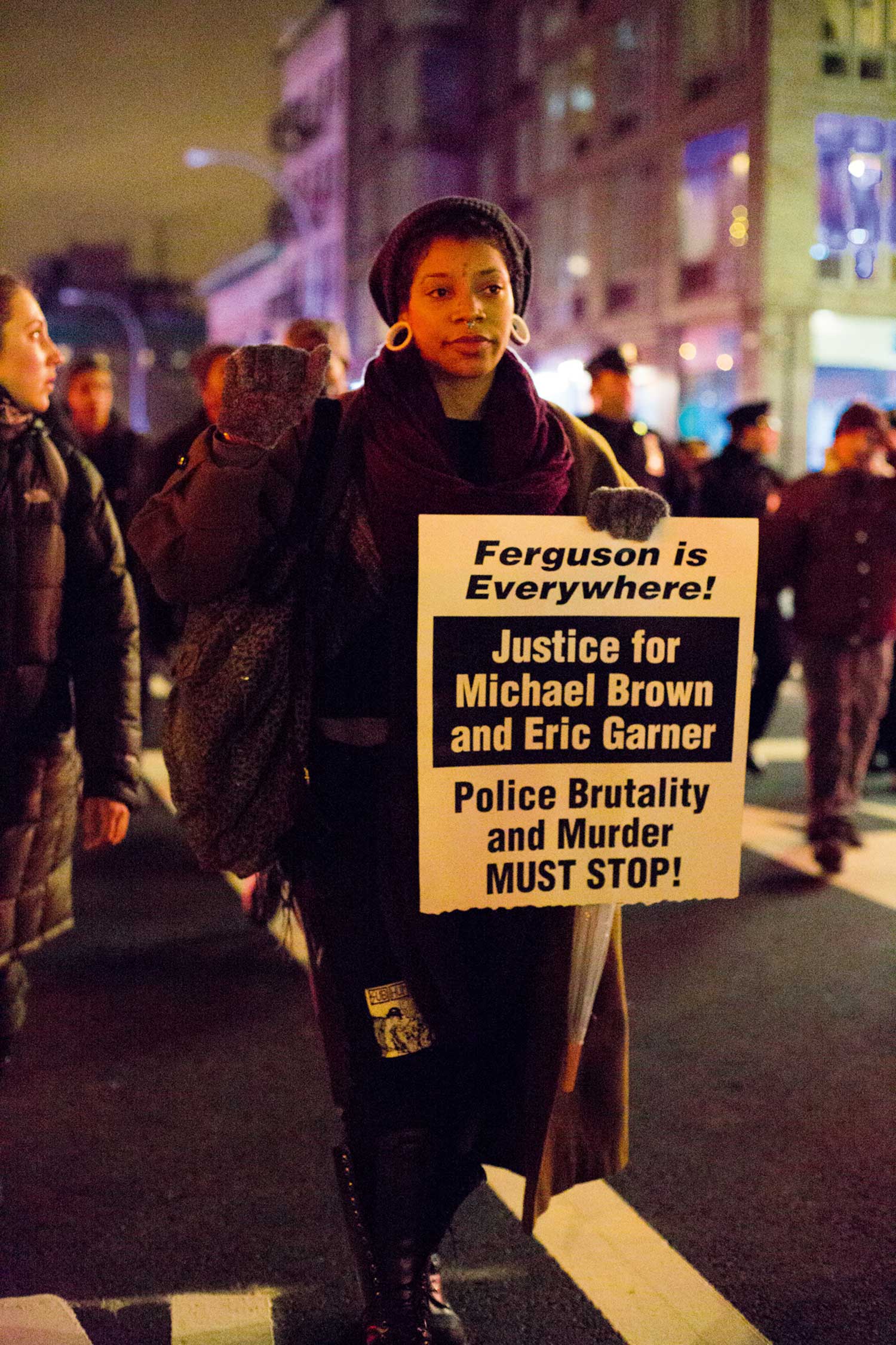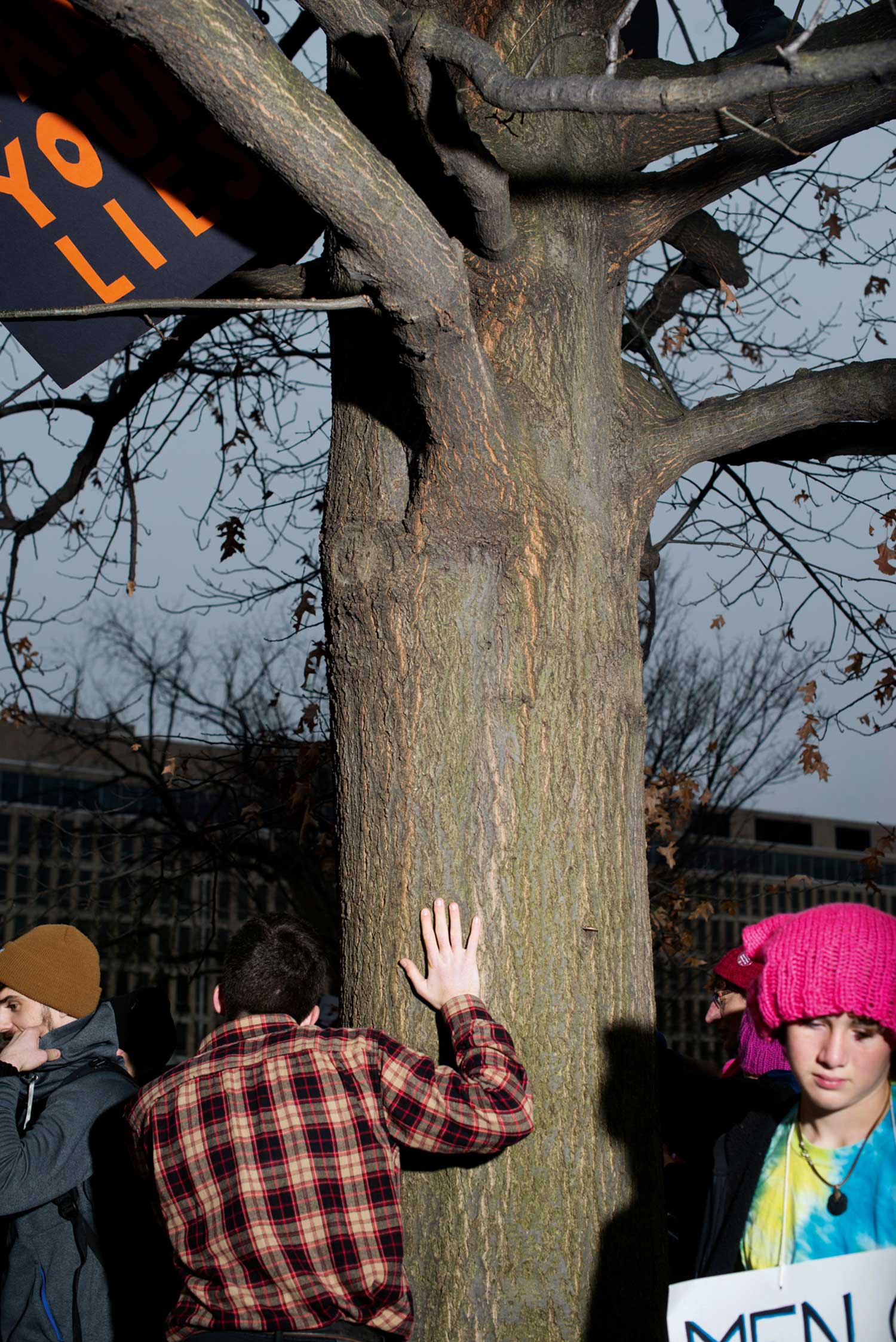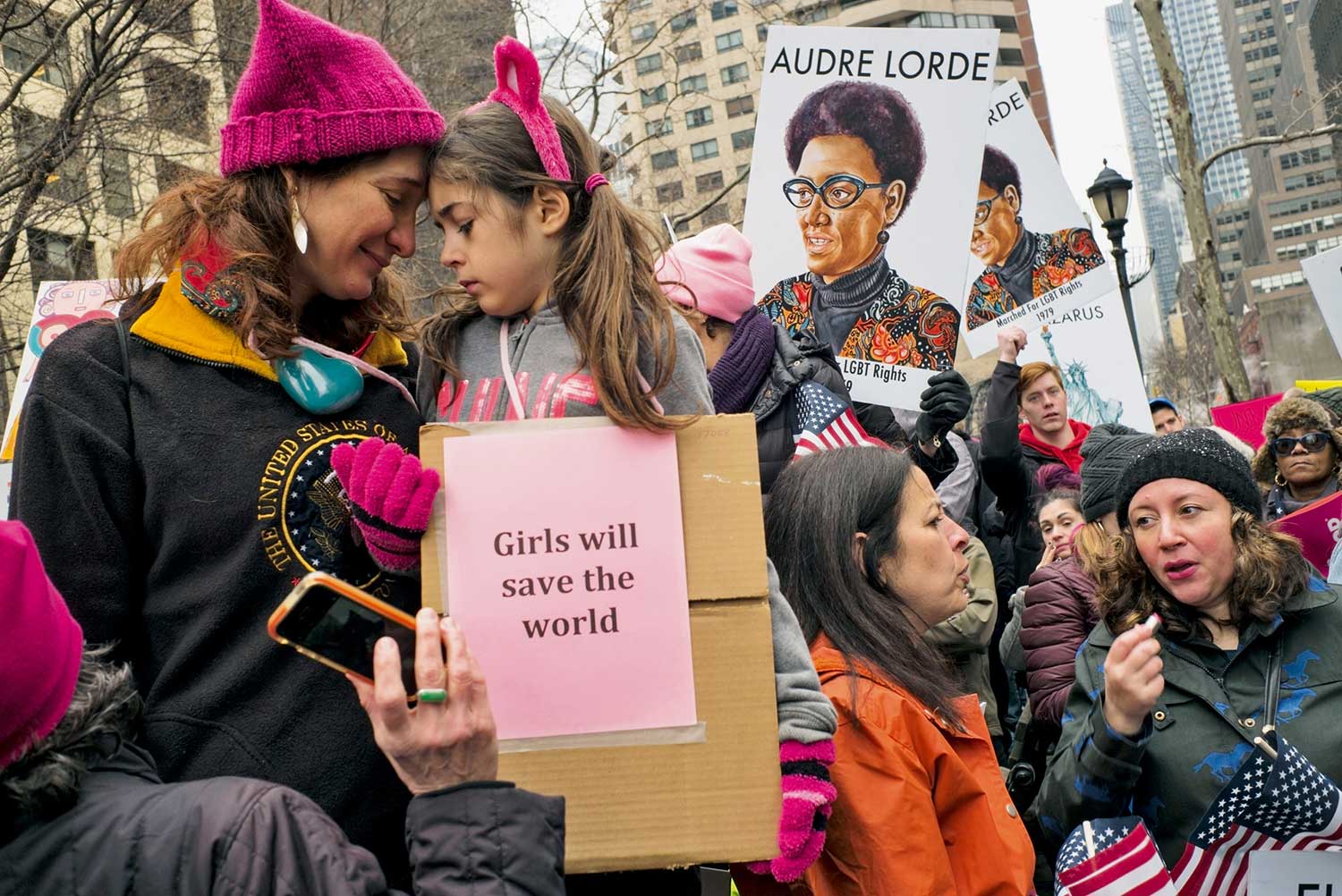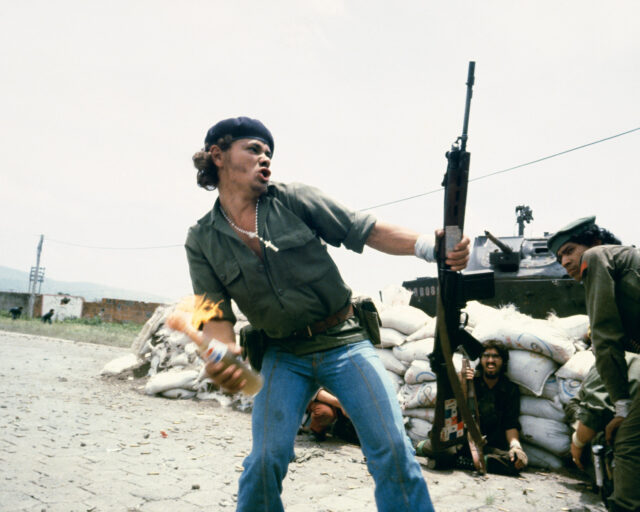In Protests from Standing Rock to Hong Kong, the Image of Solidarity
Like all documentation work, protest photography has its habits. One default setting is confrontation. Bare hands linked in a human chain parallel to riot shields. Projectiles. The pregnancy of violence. Another, related, is heroism, frequently individual. The man who stopped the tank in Tiananmen Square. The woman in Baton Rouge, at once steely and angelic, before a row of riot police. In formal terms, there is the appeal of the frame—its necessity, if one is to illustrate the news. A grand boulevard packed with demonstrators as far as the lens can see conveys significance by virtue of the scale and the setting.

Courtesy David Zwirner, New York/Hong Kong; Maureen Paley, London; and Galerie Buchholz, Cologne/Berlin
The images in these pages propose another method. The views they offer of protests—across Cairo, Istanbul, New York, Standing Rock, and Hong Kong—are more or less tightly framed or, instead, panoramic. But all center on humans. They confer no exceptionalism, no purpose that surpasses that of being present. These are not fight images; the antagonist is absent; there is no martial undercurrent.
Some, by Carl Court and Anthony Kwan in Hong Kong, are photojournalism, images circulated to news organizations by major photo agencies; they document this year’s protests that began in objection to plans to extradite criminal suspects to mainland China, but soon spread to broad demands for political autonomy. Wolfgang Tillmans’s images, from a Black Lives Matter protest in New York, are an artist’s response to the events and exist outside that professional economy. Larry Towell and Josué Rivas both photographed at Standing Rock. Rivas conducted a slow project, a months-long “offering,” as he put it, “turned … to the latent spirit” of the water protectors encamped against the permitting of a pipeline on native land.

Courtesy the artist
No matter what else it is, protest is communion. The authority and language of religion sometimes mobilize it explicitly, as in the mainstream of the civil rights movement in the United States. But, at root, this sacrament requires no liturgy. It is the work of collective imagination that invests meaning in the banner, the flower, the color, the candle, the cellphone torch beam.
It is resolve in numbers and the comfort of strangers. It is fluid, promiscuous, physical—even in a time of disembodied digital communications.
What binds these humans? Have they met before, traveled together to the meeting point from their campus or office, made a family outing of it, even a date? What small acts of care stitch them together? It matters what happens before and after, of course. People mobilize at cost—deserting schools and jobs, braving tear gas and beatings—in response to moral and material urgencies. But in the instant, there is a transcendence, an energy.

© Getty Images
Care is the ultimate subject of these images, rather than what prompted each protest, what chapter it represented in an ongoing struggle, or what outcome it achieved. Care is the politics. It is what remains, since the advent of Ronald Reagan and Margaret Thatcher, and the ideological unraveling of the idea of the public good and the attacks on the mechanisms of social solidarity throughout the industrial world, a process keenly emulated by predatory elites everywhere else and compounded by depersonalizing technologies.
Care is an antidote to the grotesquerie of unaccountable rule. It is what distinguishes the mass gatherings seen here from others fomented by demagogues, seething with hate. Another world is possible. Human dignity need not be a scarce resource; life is improvable, here and now, and, therefore, it is a duty to improve it. Beyond the news, the specifics, the local histories of outrage and demands for redress, that ethos pervades the images here—and arguably inhabits protest itself, all the more so now, in a time of rising awareness of planet-wide, cataclysmic crisis.
Questions of responsibility follow, not least for photographers, journalists, and all those who make it their craft to document. Dignity is also a practice.
In the meantime, the protests continue.

Courtesy Magnum Photos

Courtesy Magnum Photos

Courtesy Magnum Photos

Courtesy Magnum Photos

Courtesy Magnum Photos
Read more from Aperture issue 237, “Spirituality,” or subscribe to Aperture and never miss an issue.


























